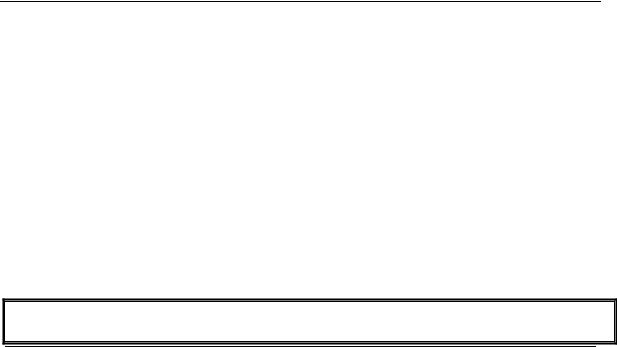
- •Table of Contents
- •Index
- •Keyword Reference
- •Installation
- •Installation of BASCOM
- •BASCOM IDE
- •Running BASCOM-AVR
- •File New
- •File Close
- •File Save
- •File Save As
- •File Print Preview
- •File Print
- •File Exit
- •View PinOut
- •View PDF viewer
- •View Error Panel
- •Edit Undo
- •Edit Redo
- •Edit Cut
- •Edit Copy
- •Edit Paste
- •Edit Find
- •Edit Find Next
- •Edit Replace
- •Edit Goto
- •Edit Toggle Bookmark
- •Edit Goto Bookmark
- •Edit Indent Block
- •Edit Unindent Block
- •Edit Remark Block
- •Program Compile
- •Program Syntax Check
- •Program Show Result
- •Program Simulate
- •Program Send to Chip
- •Tools Terminal Emulator
- •Tools LCD Designer
- •Tools LIB Manager
- •Tools Graphic Converter
- •Tools Stack Analyzer
- •Tools Plugin Manager
- •Tools Batch Compile
- •Options Compiler
- •Options Compiler Chip
- •Options Compiler Output
- •Options Compiler Communication
- •Options Compiler I2C, SPI, 1WIRE
- •Options Compiler LCD
- •Options Communication
- •Options Environment
- •Options Simulator
- •Options Programmer
- •Supported Programmers
- •ISP programmer
- •PG302 programmer
- •Sample Electronics cable programmer
- •KITSRUS Programmer
- •MCS Universal Interface Programmer
- •STK500 Programmer
- •Lawicel BootLoader
- •AVR ISP Programmer
- •USB-ISP Programmer
- •MCS Bootloader
- •Options Monitor
- •Options Printer
- •Window Cascade
- •Window Tile
- •Window Arrange Icons
- •Window Minimize All
- •Help About
- •Help Index
- •Help MCS Forum
- •Help MCS Shop
- •Help Support
- •Help Knowledge Base
- •Help Credits
- •BASCOM Editor Keys
- •Program Development Order
- •PlugIns
- •Font Editor
- •PinOut
- •BASCOM HARDWARE
- •Additional Hardware
- •AVR Internal Hardware
- •AVR Internal Registers
- •AVR Internal Hardware TIMER0
- •AVR Internal Hardware TIMER1
- •AVR Internal Hardware Watchdog timer
- •AVR Internal Hardware Port B
- •AVR Internal Hardware Port D
- •Adding XRAM
- •Attaching an LCD Display
- •Memory usage
- •Using the 1 WIRE protocol
- •Using the SPI protocol
- •Power Up
- •Chips
- •ATtiny22
- •ATtiny13
- •ATtiny15
- •ATtiny25
- •ATtiny45
- •ATtiny85
- •ATtiny26
- •ATtiny2313
- •ATMEGA8
- •ATMEGA16
- •ATMEGA32
- •ATMEGA48
- •ATMEGA88
- •ATMEGA168
- •ATMEGA64
- •ATMEGA103
- •ATMEGA128
- •ATMEGA161
- •ATMEGA162
- •ATMEGA163
- •ATMEGA165
- •ATMEGA169
- •ATMEGA323
- •ATMEGA603
- •ATMEGA8515
- •ATMEGA8535
- •BASCOM Language Fundamentals
- •Changes compared to BASCOM-8051
- •Language Fundamentals
- •Mixing ASM and BASIC
- •Assembler mnemonics
- •Reserved Words
- •Error Codes
- •Newbie problems
- •Tips and tricks
- •ASCII chart
- •BASCOM Language Reference
- •$BAUD
- •$BAUD1
- •$BOOT
- •$CRYSTAL
- •$DATA
- •$DEFAULT
- •$EEPLEAVE
- •$EEPROM
- •$EEPROMHEX
- •$EXTERNAL
- •$FRAMESIZE
- •$HWSTACK
- •$INCLUDE
- •$INITMICRO
- •$LCDPUTCTRL
- •$LCDPUTDATA
- •$LCDRS
- •$LCDVFO
- •$LOADER
- •$LOADERSIZE
- •$NOCOMP
- •$NOINIT
- •$NORAMCLEAR
- •$PROG
- •$PROGRAMMER
- •$REGFILE
- •$ROMSTART
- •$SERIALINPUT
- •$SERIALINPUT1
- •$SERIALINPUT2LCD
- •$SERIALOUTPUT
- •$SERIALOUTPUT1
- •$SWSTACK
- •$TIMEOUT
- •$TINY
- •$WAITSTATE
- •$XRAMSIZE
- •$XRAMSTART
- •1WIRECOUNT
- •1WRESET
- •1WREAD
- •1WSEARCHFIRST
- •1WSEARCHNEXT
- •1WVERIFY
- •1WWRITE
- •ACOS
- •ALIAS
- •ASIN
- •BASE64DEC
- •BASE64ENC
- •BAUD
- •BAUD1
- •BINVAL
- •BIN2GRAY
- •BITWAIT
- •BITS
- •BLOAD
- •BSAVE
- •BUFSPACE
- •BYVAL
- •CALL
- •CHECKSUM
- •CIRCLE
- •CLEAR
- •CLOCKDIVISION
- •CLOSE
- •CLOSESOCKET
- •CONFIG
- •CONFIG 1WIRE
- •CONFIG ACI
- •CONFIG ADC
- •CONFIG ATEMU
- •CONFIG BCCARD
- •CONFIG CLOCK
- •CONFIG CLOCKDIV
- •CONFIG COM1
- •CONFIG COM2
- •CONFIG COMx
- •CONFIG DATE
- •CONFIG DCF77
- •CONFIG DEBOUNCE
- •CONFIG I2CDELAY
- •CONFIG I2CSLAVE
- •CONFIG INPUT
- •CONFIG INTx
- •CONFIG GRAPHLCD
- •CONFIG KBD
- •CONFIG KEYBOARD
- •CONFIG LCD
- •CONFIG LCDBUS
- •CONFIG LCDMODE
- •CONFIG LCDPIN
- •CONFIG PORT
- •CONFIG PRINT
- •CONFIG PRINTBIN
- •CONFIG PS2EMU
- •CONFIG RC5
- •CONFIG SDA
- •CONFIG SCL
- •CONFIG SERIALIN
- •CONFIG SERIALIN1
- •CONFIG SERIALOUT
- •CONFIG SERIALOUT1
- •CONFIG SINGLE
- •CONFIG SPI
- •CONFIG SERVOS
- •CONFIG TCPIP
- •CONFIG TIMER0
- •CONFIG TIMER1
- •CONFIG TIMER2
- •CONFIG TWI
- •CONFIG TWISLAVE
- •CONFIG WAITSUART
- •CONFIG WATCHDOG
- •CONFIG X10
- •CONFIG XRAM
- •CONST
- •COSH
- •COUNTER0 and COUNTER1
- •CPEEK
- •CPEEKH
- •CRYSTAL
- •CURSOR
- •DATA
- •DAYOFWEEK
- •DAYOFYEAR
- •DATE$
- •DATE
- •DEBUG
- •DEBOUNCE
- •DECR
- •DECLARE FUNCTION
- •DECLARE SUB
- •DEFxxx
- •DEFLCDCHAR
- •DELAY
- •DISABLE
- •DISKFREE
- •DISKSIZE
- •DISPLAY
- •DO-LOOP
- •DriveCheck
- •DriveGetIdentity
- •DriveInit
- •DriveReset
- •DriveReadSector
- •DriveWriteSector
- •DTMFOUT
- •ECHO
- •ELSE
- •ENABLE
- •ENCODER
- •EXIT
- •FILEATTR
- •FILEDATE
- •FILEDATETIME
- •FILELEN
- •FILETIME
- •FLUSH
- •FORMAT
- •FOR-NEXT
- •FOURTHLINE
- •FRAC
- •FREEFILE
- •FUSING
- •GETADC
- •GETATKBD
- •GETATKBDRAW
- •GETDSTIP
- •GETDSTPORT
- •GETKBD
- •GETRC
- •GETRC5
- •GETTCPREGS
- •GETSOCKET
- •GLCDCMD
- •GLCDDATA
- •GOSUB
- •GOTO
- •GRAY2BIN
- •HEXVAL
- •HIGH
- •HIGHW
- •HOME
- •I2CINIT
- •I2CRECEIVE
- •I2CSEND
- •I2START,I2CSTOP, I2CRBYTE, I2CWBYTE
- •IDLE
- •IF-THEN-ELSE-END IF
- •INCR
- •INITFILESYSTEM
- •INITLCD
- •INKEY
- •INPUTBIN
- •INPUTHEX
- •INPUT
- •INSTR
- •ISCHARWAITING
- •KILL
- •LCASE
- •LCDAT
- •LCDCONTRAST
- •LEFT
- •LINE
- •LINE INPUT
- •LTRIM
- •LOAD
- •LOADADR
- •LOADLABEL
- •LOADWORDADR
- •LOCAL
- •LOCATE
- •LOOKDOWN
- •LOOKUP
- •LOOKUPSTR
- •LOWERLINE
- •MAKEBCD
- •MAKEINT
- •MAKEDEC
- •MAKETCP
- •MEMCOPY
- •NBITS
- •ON INTERRUPT
- •ON VALUE
- •OPEN
- •PEEK
- •POKE
- •POPALL
- •POWER
- •POWERDOWN
- •POWERSAVE
- •PRINTBIN
- •PSET
- •PS2MOUSEXY
- •PULSEIN
- •PULSEOUT
- •PUSHALL
- •RC5SEND
- •RC5SENDEXT
- •RC6SEND
- •READ
- •READEEPROM
- •READMAGCARD
- •RESET
- •RESTORE
- •RETURN
- •RIGHT
- •ROTATE
- •ROUND
- •RTRIM
- •SECELAPSED
- •SECOFDAY
- •SEEK
- •SELECT-CASE-END SELECT
- •SETFONT
- •SETTCP
- •SETTCPREGS
- •SENDSCAN
- •SENDSCANKBD
- •SERIN
- •SEROUT
- •SETIPPROTOCOL
- •SHIFT
- •SHIFTCURSOR
- •SHIFTIN
- •SHIFTOUT
- •SHIFTLCD
- •SHOWPIC
- •SHOWPICE
- •SINH
- •SOCKETCONNECT
- •SOCKETLISTEN
- •SOCKETSTAT
- •SONYSEND
- •SOUND
- •SPACE
- •SPIIN
- •SPIINIT
- •SPIMOVE
- •SPIOUT
- •SPLIT
- •START
- •STCHECK
- •STOP
- •STRING
- •SYSSEC
- •SYSSECELAPSED
- •SYSDAY
- •SWAP
- •TCPCHECKSUM
- •TCPREAD
- •TCPWRITE
- •TCPWRITESTR
- •TANH
- •THIRDLINE
- •TIME$
- •TIME
- •TOGGLE
- •TRIM
- •UCASE
- •UDPREAD
- •UDPWRITE
- •UDPWRITESTR
- •UPPERLINE
- •VARPTR
- •VERSION
- •WAIT
- •WAITKEY
- •WAITMS
- •WAITUS
- •WHILE-WEND
- •WRITE
- •WRITEEEPROM
- •X10DETECT
- •X10SEND
- •#IF ELSE ENDIF
- •International Resellers
- •International Resellers
- •ASM Libraries
- •EXTENDED I2C
- •MCSBYTE
- •MCSBYTEINT
- •TCPIP
- •LCD4BUSY
- •GLCD
- •GLCDSED
- •LCD-EPSON
- •AVR-DOS File System
- •CF Card
- •Compact FlashCard Driver
- •Elektor CF-Interface
- •XRAM CF-Interface for simulation
- •New CF-Card Drivers
- •Floating Point
- •FP_TRIG
- •DOUBLE
- •I2C SLAVE
- •I2CSLAVE
- •I2C TWI Slave
- •SPISLAVE
- •DATE TIME
- •EUROTIMEDATE
- •DATETIME
- •PS2-AT Mouse and Keyboard Emulation
- •AT_EMULATOR
- •PS2MOUSE_EMULATOR
- •BCCARD
- •BCCARD
- •BCDEF
- •BCCALL
- •BCRESET
- •Tools
- •LCD RGB-8 Converter

© MCS Electronics, 1995-2007
Spmcrval = 17 : Gosub Do_spm |
' re-enable page |
End If |
|
Next |
'indication that |
Toggle Portb.2 : Waitms 10 : Toggle Portb.2 |
|
we write |
|
Return |
|
Do_spm: |
' check for |
Bitwait Spmcsr.selfprgen , Reset |
|
previous SPM complete |
'wait for eeprom |
Bitwait Eecr.eepe , Reset |
|
Z = Page |
'make equal to |
page |
'shift to proper |
Shift Z , Left , Maxwordshift |
|
place |
'add word |
Z = Z + Wrd |
|
lds r30,{Z} |
|
lds r31,{Z+1} |
|
Spmcsr = Spmcrval |
'assign register |
spm |
'this is an asm |
instruction |
|
nop |
|
nop |
|
Return |
|
'How you need to use this program: '1- compile this program
'2- program into chip with sample elctronics programmer '3- select MCS Bootloader from programmers
'4- compile a new program for example M88.bas '5- press F4 and reset your micro
'the program will now be uploaded into the chip with Xmodem Checksum
'you can write your own loader. And we will release a command line loader in the future
$LOADERSIZE
Action
Instruct the compiler that a boot loader is used so it will not overwrite the boot space.
Syntax
$LOADERSIZE = size
Remarks
size |
The amount of space that is used by the boot loader. |
|
|
When you use a boot loader it will use space from the available flash memory. The compiler does not know if you use a boot loader or not. When your programexceeds the available space and runs into the boot sector space, it will overwrite the boot loader.
The $loadersize directive will take the boot loader size into account so you will get an error when the target file gets too big.
When you select the MCS bootloader as programmer the IDE also will take into account the specified boot loader size.
page -235-

© MCS Electronics, 1995-2007
The directive can be used when you have a different programmer selected. For example an external programmer that does not know about the boot size.
See also
$LOADER
ASM
NONE
Example
NONE
$MAP
Action
Will generate label info in the report.
Syntax
$MAP
Remarks
The $MAP directive will put an entry for each line number with the address into the report file. This info can be used for debugging purposes with other tools.
See also
NONE
ASM
NONE
Example
$MAP
The report file will not contain the following section :
Code map
--------------------------------------------------------------------------------
Line Address(hex)
--------------------------------------------------------------------------------
1 |
0 |
9 |
36 |
26 |
39 |
30 |
3B |
31 |
3E |
32 |
48 |
page -236-

© MCS Electronics, 1995-2007
33 |
4B |
36 |
50 |
37 |
56 |
42 |
5B |
43 |
6C |
44 |
7D |
45 |
80 |
46 |
81 |
$NOCOMP
Action
Instruct the compiler not to compile the file.
Syntax
$NOCOMP
Remarks
This looks like an odd directive. Since you can split your program in multiple files, and you can create configuration files, you might open a file and try to compile it. Only normal project files can be compiled and you will get a number of errors and also unwanted files like error, report, etc.
To prevent that you compile a file that is intended to be included, you can insert the $NOCOMP directive.
Then the file will only be compiled when it is called from your main file, or other include file.
A file that is opened as thus the main file, and which includes the $NOCOMP directive, can not be compiled.
The IDE will see it as a successful compilation. This is important for the Batch Compiler.
See also
Batch Compiler
Example
$NOCOMP
$NOINIT
Action
Instruct the compiler to generate code without initialization code.
Syntax
$NOINIT
page -237-

© MCS Electronics, 1995-2007
Remarks
$NOINIT is only needed in rare situations. It will instruct the compiler not to add initialization code. But that means that you need to write your own code then.
$NOINIT was added in order to support boot loaders. But the new $LOADER directive can better be used as it does not require special ASM knowledge.
See also
$LOADER
Example
$NORAMCLEAR
Action
Instruct the compiler to not generate initial RAM clear code.
Syntax
$NORAMCLEAR
Remarks
Normally the SRAM is cleared in the initialization code. When you don't want the SRAM to be cleared(set to 0) you can use this directive.
Because all variables are automatically set to 0 or ""(strings) without the $NORAMCLEAR, using $NORAMCLEAR will set the variables to an unknown value. That is, the variables will probably set to FF but you cannot count on it.
When you have a battery back upped circuit, you do not want to clear the RAM at start up. So that would be a situation when you could use $NORAMCLEAR.
See also
$NOINIT
$PROG
Action
Directive to auto program the lock and fuse bits.
Syntax
$PROG LB, FB , FBH , FBX
page -238-

© MCS Electronics, 1995-2007
Remarks
While the lock and fuse bits make the AVR customizable, the settings for your project can give some problems.
The $PROG directive will create a file with the project name and the PRG extension.
Every time you program the chip, it will check the lock and fuse bit settings and willchange them if needed.
So in a new chip, the lock and fuse bits will be set automatically. A chip that has been programmed with the desired settings will not be changed.
The programmer has an option to create the PRG file from the current chip settings.
The LB, FH, FBH and FBX values are stored in hexadecimal format in the PRJ file. You may use any notation as long as it is a numeric constant.
Some chips might not have a setting for FBH or FBX, or you might not want to set all values. In that case, do NOT specify the value. For example:
$PROG &H20 ,,,
This will only write the Lockbit settings.
$PROG ,,&H30,
This will only write the FBH settings.
LB |
Lockbit settings |
FB |
Fusebit settings |
FBH |
Fusebit High settings |
FBX |
Extended Fusebit settings |
|
|
Sometimes the data sheet refers to the Fusebit as the Fusebit Low settings.
The $PROG setting is only supported by the AVRISP, STK200/300, Sample Electronics and Universal MCS Programmer Interface. The USB-ISP programmer also supports the $PROG directive.
 When you select the wrong Fuse bit, you could lock your chip. For example when you choose the wrong oscillator option, it could mean that the micro expects an external crystal oscillator. But when you connect a simple crystal, it will not work.
When you select the wrong Fuse bit, you could lock your chip. For example when you choose the wrong oscillator option, it could mean that the micro expects an external crystal oscillator. But when you connect a simple crystal, it will not work.
In these cases where you can not communicate with the micro anymore, the advise is to apply a clock signal to X1 input of the micro.
You can then select the proper fusebits again.
When you set the Lockbits, you can not read the chip content anymore. Only after erasing the chip, it could be reprogrammed again.
 Once the lockbits and fuse bits are set, it is best to remark the $PROG directive. This because it takes more time to read and compare the bits every time.
Once the lockbits and fuse bits are set, it is best to remark the $PROG directive. This because it takes more time to read and compare the bits every time.
See also
Programmers , $PROG
page -239-
